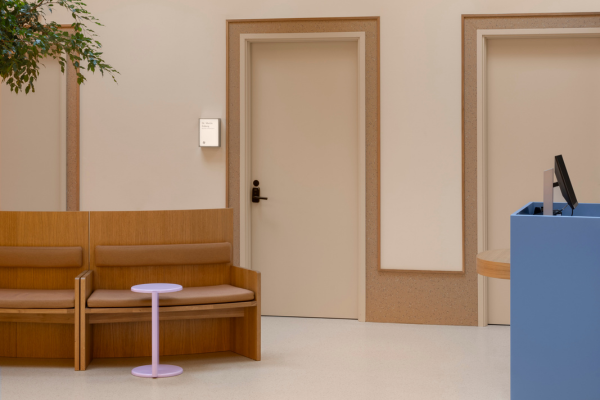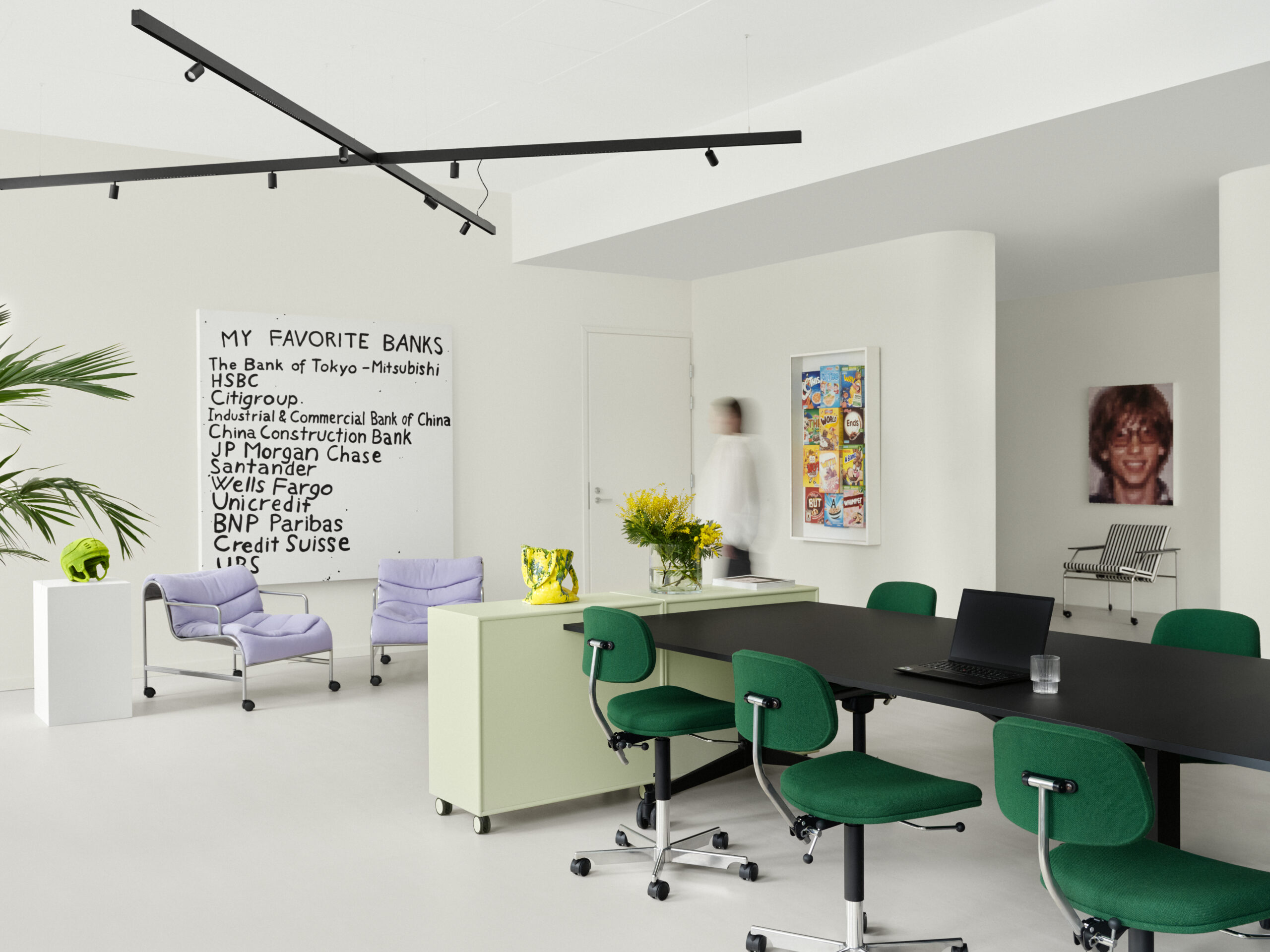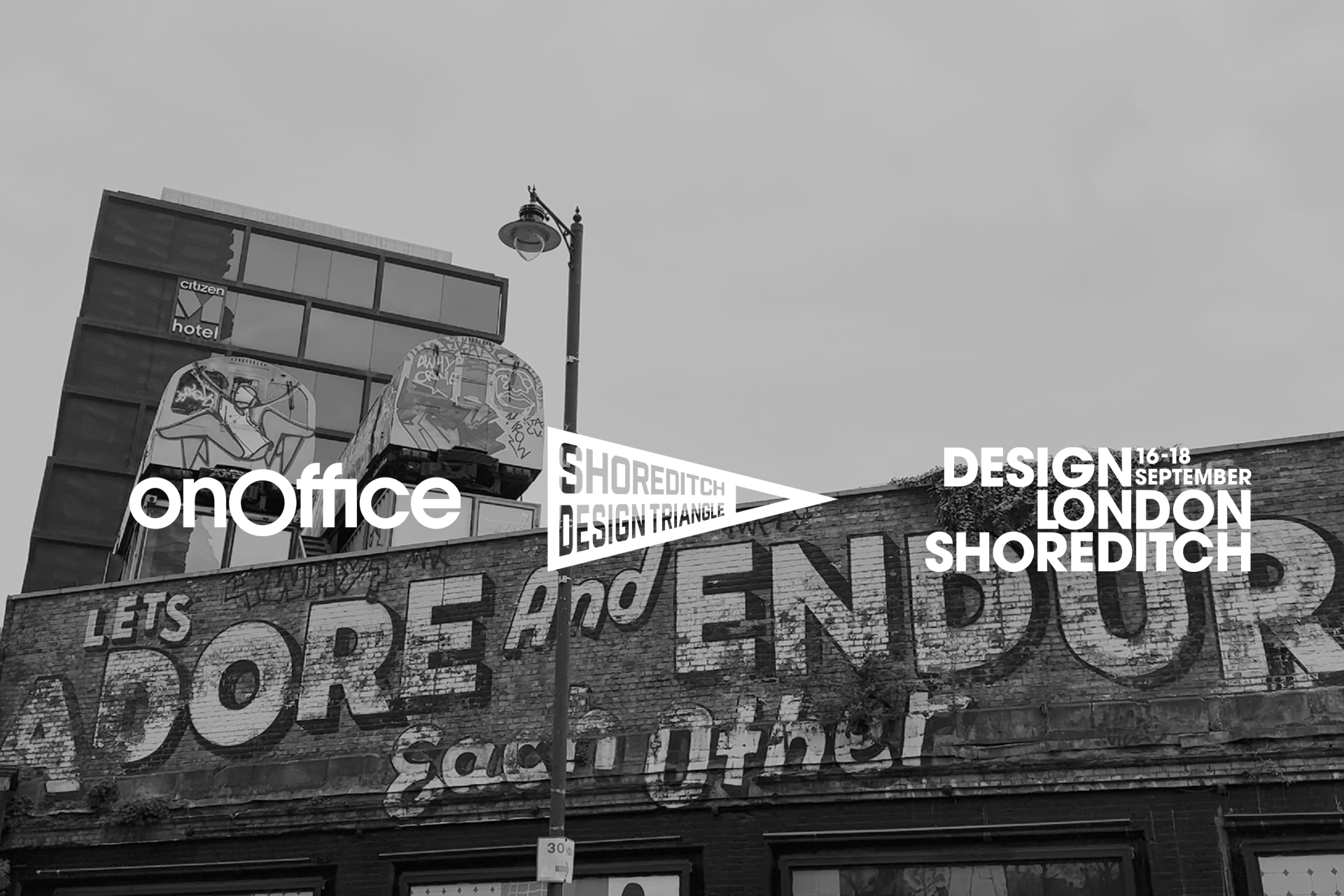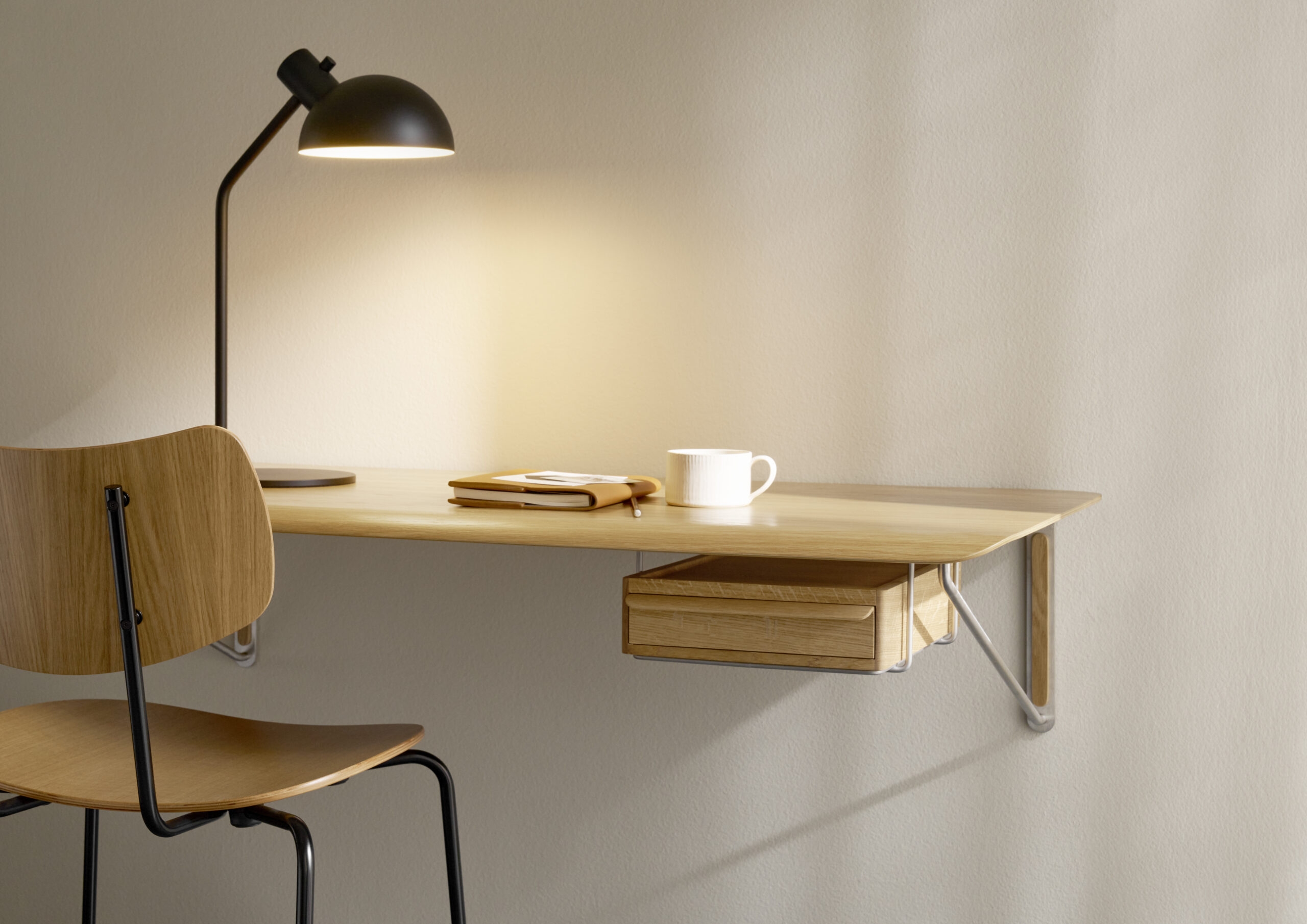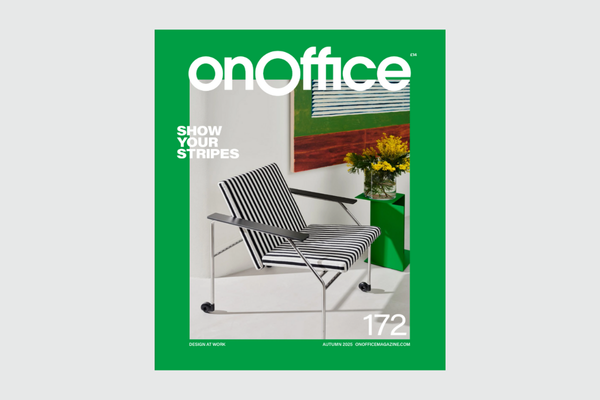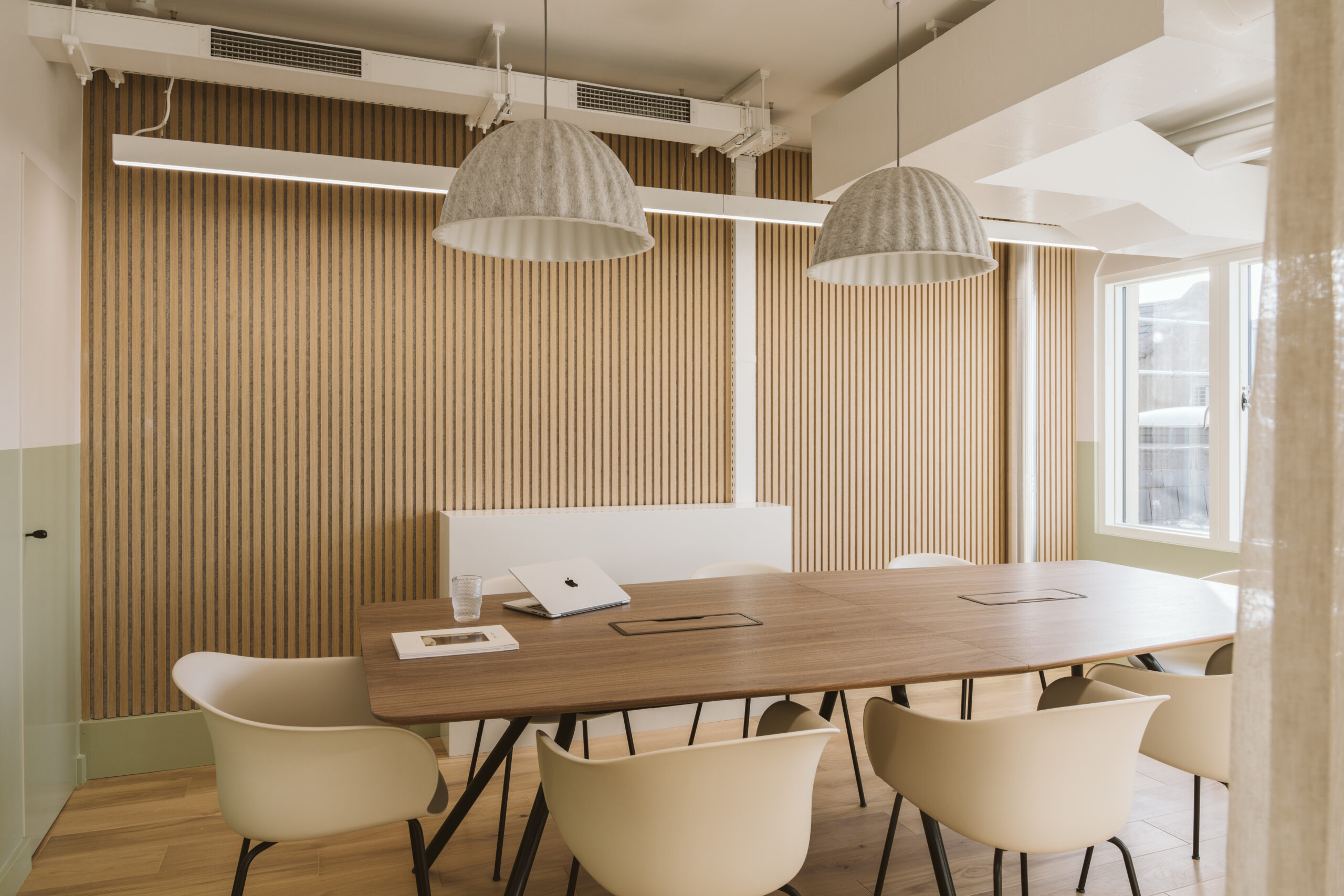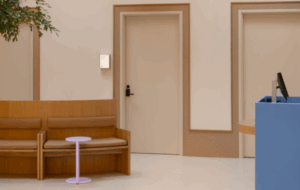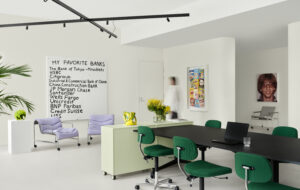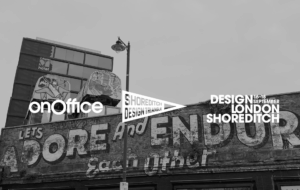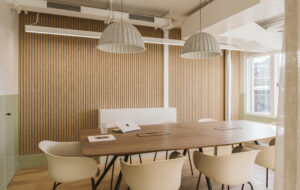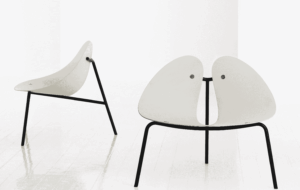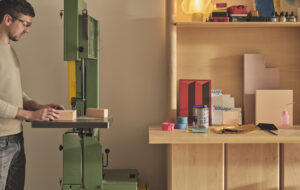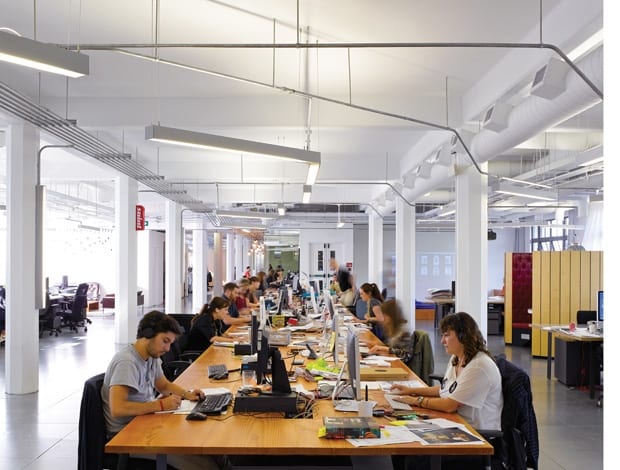 Spacelab’s work at one ad agency saw 25% reduction in floor space…|… while total capacity for breakout/meeting space rose from 105 to 202 people|Research-based design typically requires much more up-front input|Woods Bagot’s work for Macquarie Group in Sydney, designed using EBD|Post-occupy research showed higher levels of staff engagement||
Spacelab’s work at one ad agency saw 25% reduction in floor space…|… while total capacity for breakout/meeting space rose from 105 to 202 people|Research-based design typically requires much more up-front input|Woods Bagot’s work for Macquarie Group in Sydney, designed using EBD|Post-occupy research showed higher levels of staff engagement||
Proving a credible link between human performance and the built environment is architect’s next big frontier. Is the research-led approach of evidence-based design going to deliver it?
In a perfect world, every workplace would fit, hand in glove, with its workers: desks would be occupied in an optimally efficient way; meeting rooms would never be under- or over-booked; no one would be too hot or too cold; and yes, that statement staircase would produce those “chance encounters” to boost the productivity of collaboration-hungry knowledge workers.
Nice idea. But life is messy. Outcomes don’t always match expectations, and people don’t always use buildings in the expected way. To minimise this, however, many practices are now taking a more rigorous, empirical approach to workplace design, which relies on extensive front-end research.
Evidence-based design is “a concept whose time has come”, says Richard Francis, director of environment and sustainability at construction consultancy Gardiner & Theobald. “We know from academic literature that design clearly influences people’s behaviour; the real challenge is trying to identify the principles of design that will enhance not only environmental performance, but human performance.” As he sees it, from a business perspective, even the greenest of office buildings isn’t really sustainable if it lacks efficient, engaged workers. “We’re beginning to think about what buildings do, as opposed to what they are, and that’s a fundamental shift,” says Francis. “When I’m talking to clients, the criticism of Building Regulations or certification schemes like BREEAM is that they’re not really real; there’s always a gap between what you think you’re getting, and what you actually get.”
The UK Green Building Council’s chief executive, Paul King, warned last year that post-occupancy proof of a building’s poor performance could expose the profession to negligence claims: “If we rethink it, redesign it, we are going to have to prove we’ve made it better,” he said. “There is a great role for architects here. It will require more rigour, more science. It is going to require continued up-skilling of the profession.” In this light, the stakes are high for EBD to deliver a more scientifically rigorous result.
Although the environmental impact of a building is much more measurable than ten or 15 years ago, measuring its social and economic impact has garnered less attention. “The idea that the way your building performs can have an impact on its value – or if you’re the occupier, an impact on your reputation – is something that the industry is still coming to grips with,” says Francis. It’s partly because measuring how “successful” a workplace is in a scientific way is problematic. To explain the background, EBD has its roots in healthcare design, where there is a credible body of research linking design to improved patient safety and faster healing – for example, single hospital rooms are consistently proven to reduce infection compared to wards. What are the workplace equivalents, though? Productivity was once measured by increased typing speeds in the secretaries’ pool, but where does that leave the business that wants its fit out to deliver increased collaboration, more flexibility, or a repositioning of their brand? “Productivity is in many ways the silver bullet, but what’s much more informative, especially for knowledge-based organisations, is the engagement of employees,” says Earle Arney, Woods Bagot’s director of workplace. “If you’re able to increase engagement scores, that’s really massive.”
Arney says that EBD “underpins everything we do; we’ve built a business around it,” and the firm’s One Shelley Street in Sydney, for bank Macquarie Group, shows very encouraging results. Macquarie’s post-occupancy research with the University of Sydney into how its new activity-based workplace – a pretty radical concept for a bank – has fared showed that 97% of workers preferred their new environment, 93% preferred the new ways of working, and that 60% felt they were more productive (although how productive they were in reality wasn’t measured).
How does scientific research translate into practice, though? “There are quite a few challenges that stand in the way of design being more research-based,” says Dr Kerstin Sailer, lecturer in complex buildings at UCL’s Bartlett School of Graduate Studies. “Methods may not be quite understandable to lay people, with results normally written in academic papers, using jargon that is not very friendly for practitioners.” She thinks the problem runs deeper, though: “It’s a culture clash. The way we set up the research process, in a very scientific way, is not always appealing to architects, who have been trained to work quite differently. On the one hand there’s method, rigour, science – and the limitations of science, obviously – and on the other hand there are practicing architects, who have intuition, experience, judgement and working with their clients’ expectations.”
There is plenty of research that appears to link good design with better, more efficient workers, but it is hard to isolate cause and effect. Ideally, research should be replicable as well as empirical, but so much of what goes on in the workplace is about unique organisational culture rather than broader factors like, say, levels of daylight. “There have been studies showing, for example, that in LEED buildings, productivity increases and sickness decreases, and satisfaction with the building increases,” says Richard Francis, “but we need to be careful, because it’s difficult to separate out exactly what is causing those results.” He says that there is some good evidence for linking environmental factors such as natural ventilation, and acoustic and thermal performance, with positive worker experiences, but it’s different when it comes to research about how people behave and interact. “The robustness of the research, and its transferability, is always going to be a big problem in EBD,” says Sailer. “When I look at the evidence base we have for healthcare, it is relatively robust, but for workplaces, it’s all over the place.”
Sailer’s consultancy work for workplace designers Spacelab, whose clients include Virgin Money and publishers Emap, focuses on space usage – the creation of environments for optimum business effectiveness. This is what most workplace designers mean by EBD – systematic up-front research that takes a lot longer than the typical amount of work needed to fulfil a brief, but which results in a space based on what’s actually happening, rather than what the CEO might tell you is happening, or what a designer might be able to glean from a few walk-throughs and staff interviews.
“We would normally do a study of eight to 12 weeks, where we don’t do a single design move; all we do is assess who the client is. By the end of it we have a better understanding of how these people work than the people themselves,” says Sailer. This encompasses interviews with those at management level; an online staff questionnaire that includes questions about which of their colleagues they interact with, how much of their day they spend in meetings or out of the building; and standardised, structured observation about how many people use the tea points, for example, or are at their desks at any one time. Sailer says that it was initially hard to persuade clients on tight budgets and timescales that it would take two to three months just to assess their needs, but her initial work with Spacelab was mostly funded by a government grant, which cushioned the blow: “It helped to establish our processes, to offer pilot studies at no cost, to get a feel for the kind of data we should collect and how we could use it. It’s easier now, because we’ve redesigned those buildings and the clients are super-happy, and that’s the best marketing you can imagine.”
AMA Alexi Marmot Associates first developed workplace design strategies for IBM in the 1990s, and has more recently acted as consultants for Seattle’s Bill and Melinda Gates Foundation (onoffice 66). AMA has developed standardised assessment tools, called WorkWare, that assess how buildings are used and its occupants’ opinions. It uses a mix of questionnaires, observational surveys, interviews and focus groups, with the added benefit of benchmarking data from previous surveys – some 60,000 desks’ worth – that reveals what that data means. AMA director Joanna Eley says: “We collect data because we believe evidence improves decision making. It creates new layers of understanding about what’s going on in particular type of workplace.” She adds that it also “makes it easier to communicate with people about what’s really going on” – so, for example, clients are more readily persuaded to move towards non-assigned desks if there is strong evidence of low desk utilisation, or significant business is already being conducted in meeting rooms, corridors, the canteen, or off the premises.
How does a multi-national, multi-disciplinary firm disseminate and manage research? Woods Bagot has its own research arm, Public, to which it devotes 2% of revenue, and a searchable intranet portal for accessing the latest information. Arney agrees with Eley that EBD can make life easier when it comes to pushing through change: “It is more demanding at the front end, so that the resource curve is closer to the front, in terms of the work you need to do. But it’s certainly a hell of a lot more rewarding for our client, be they end users of corporate office space, or developers who want to make sure that they are most aligned to what their clients want.”
Just as key, though, is creating a research-friendly culture, says Arney, “applying it on day one of a project, and making it really acceptable to all our people.” Woods Bagot publishes its research – “I think an organisation of our size has an obligation to the profession, and a duty to the environment, to share this information” – but that’s not the norm. The issue of post-occupancy study is a crucial one: such documentation should be the building blocks for ever-better workplaces, but rarely is a firm as interested in evaluating their new workplace as Macquarie were – Arney puts it down to the fact that they’re a bank, and thus obsessed with evaluating and putting a figure on everything (Macquarie has worked out that its new building will save it an impressive AUS$10m a year over ten years).
Richard Francis laments the fact that he cannot categorically say to clients that a certain type of building will boost performance: “The feedback mechanism, the collection of data, the experience-based results – they’re just not there. We’re constantly examining prototypes; we should be further along than that.” Francis is the new chair of the BCO’s environmental sustainability group, and says that he will be pushing the EBD agenda via the BCO’s research and discussion programme. So, while no one’s going to be proving the communications effectiveness of a feature staircase any time soon, what might happen is the creation of a more open culture of information-sharing, which in turn might find a way to place a tangible value on good workplace design.

